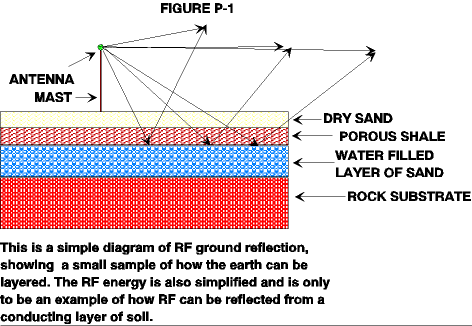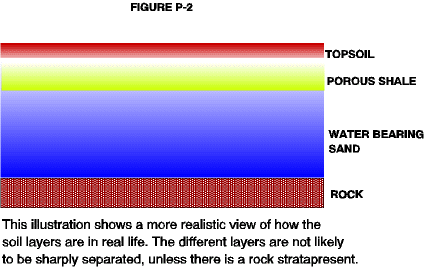A Point to Ponder
Our local weather recently dumped over 2 feet (.6 meters) of rainfall in just about 12 hours. Then, over the next few days, we had more rain. To put it mildly, we were floating for nearly 5 days. The ground is definitely soaked, and even though at this time, nearly two weeks later, mud still rules my yard and the surrounding neighborhood.
How does this pertain to antennas? Simple. My antenna had to be retuned! My particular antenna is a four wire inverted V quadpole, fed by twinlead. Two of the elements are cut for 40 meters, and the other two elements have been carefully cut to no particular length at all. The center of the dipole is about 40 ft. (12.6 meters) up and the ends vary from about 6 ft. to 12 ft. (1.82 to 3.6 meters) above ground. I use an old 275 watt Johnson antenna Matchbox to tune the antenna on all the other bands I operate use. After taking care of the other disasters that take place when a monsoon of this magnitude hits, I went to the ham shack and decided to get on the air. I was rather surprised to see my VSWR had jumped up beyond the measurement capabilities of my meter.
I returned the antenna and continued on operating. Several days later I noticed that the VSWR had started to creep up again. So the antenna was retuned again. As the lake in the back yard began to vanish, the VSWR kept changing. Now the lake is gone and the mud is receding, at least on the surface. The VSWR continues to change on a daily basis and constant retuning is still taking place, but not as drastic as originally took place during the highest moisture levels. Of course, this is due to the conductivity of the earth changing in relation to the gradual drying out of the soil.
Before the rains took place, we had been in a rather dry spell and the VSWR had not varied too much on a daily basis. But I have noticed fluctuations in the reflected power throughout the days and weeks. I have a 15 ft. (4.56 Meters) ground pipe made of copper pipe in the ground about 13 ft. (3.952 meters) in the ground. I also know there is a subterranean river under my house that is about 17 to 20 ft. (5.16 to 6.08 meters) below the surface.
Now, one of the things I learned is that ground is not always ground. What defines ground is where ground conducts—or reflects. If you put an antenna up over sand, where is ground? Sand does not conduct unless it is wet, or does it? The black clay, that is predominant here obviously, has no such definite conditions of conductivity since it can vary in moisture content as a result of the varying soil composition. Sand is either wet, damp or dry. A solid rock formation is also going to be dry, be it granite, flint, marble or any other material. Someone living on a rock formation will need a ground system of radials to get a vertical to work, unless you are using a ½ wave vertical. or other ground independent vertical antenna.
Now how can the level of moisture in the earth determine DX ranges? Simple. The radiated signal from a horizontal antenna bounces off of the earth doesn’t it? So if the RF is going to bounce off of an RF reflector, that would have to be something RF sees as a reflector—which would be a lot of water under the ground—or does it? Now we have some points to ponder—to soak or not to soak, that is the question.
The illustrations, Figures 1 and 2, are simplifications of what your horizontally polarized antenna sees when you are transmitting. This is also very much simplified as the radiated energy is much more dense than depicted. Basically the reflected energy bounces off of the water present in the lower levels of the layers of the different strata present. The reflected waves then either add or subtract from the energy of the directly radiated waves, depending on the phase of the reflected energy. The amount of cancellation or addition is also dependent on the power the reflected wave has after reflection..


Figure 1 shows the direct radiated energy and how the reflected waves bounce up and intercept the direct energy from the antenna. Figure 2 is a representation of how the different layers might be found as you dig or drill down through the earth, such as for a mine or oil well. This is also very much simplified, as the different layers are not usually as sharply outlined, but usually blend into each other gradually.
Originally posted on the AntennaX Online Magazine by Richard Morrow, K5CNF
Last Updated : 28th March 2024
